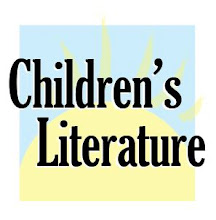Harold and the Purple Crayon scared the bejeezus out of me as a kid.
Let me quickly add that this seems not the usual reaction of children and certainly not of adult critics, who heap laudatory adjectives--“imaginative,” “original,” “ingenious”--upon the trim classic by Crockett Johnson.
But even as the book unnerved me, it drew me in. That was its delicious power. As a child, I’d carefully study the pages and think about Harold. Setting out for a nocturnal stroll, he seemed overly bold for a tyke in footie pajamas. And that purple crayon! It might bring adventure but could it stave off danger? I was skeptical. After all, Harold, feeling hungry, had drawn nine pies. But any four year old worth her P&J knew you couldn’t eat pictures of pies. Sure, the tot had managed to draw a ship when he was drowning and a hot-air balloon when he was falling but what if, in the future, he didn’t draw fast enough or drew the wrong thing?
And the closing pages—ai-yi-yi. Harold is tired but can’t find his bed or the moon and so decides to draw them. Draw them! Well, what would happen, I remember worrying, when he wakes up? He’d still have to find the real ones. And I could barely formulate the next thought: What about his mom? How could Harold draw her? (I’d seen his child-like depiction of the friendly policeman and didn’t put much stock in his ability to render the human form, especially one as important as “mother.”) That poor boy didn’t seem to realize how truly lost he was. Faced with the ending, sometimes I had to shut my eyes. The thought of Harold, smiling and tucked forever in his made-up world made me dizzy.
Even at the remove of many years, Harold and the Purple Crayon exerts a pull. It seems a perfect fable about the potential and pitfalls of the creative process.
Of course, my childhood memory of poring over the book is recounted in the reasoned language of adulthood. It is a language that has learned to temper, qualify and shape experience when, in actuality, a young child’s experience is raw, untutored and unlettered. I don’t remember a time before language, do you? I don’t remember when the circle-in-sky first became “moon” or the small-smelly-good became “flower” or more specifically “daffodil” or “lilac.” It must have been an amazing time.
For me, writing for kids has been about trying to creep ever closer to that time. That time when words were new and potent, ripe with sound and rich with texture. That time before coping mechanisms and caveats, that time when disappointment could crush and joy literally leap. Many children’s authors become so after a long time spent writing for adults—and it’s writing we still do: book reviews, articles, memos, reports, stories and poems. We’ve learned a facility with language, grammar, syntax and form.
But writing for children requires more than that type of facility. Picasso famously said that it took him “a lifetime to paint like a child.” Unlearning the tricks of language can be difficult. Can one’s unadorned sentence convey the explosiveness of a child’s emotions (as Maurice Sendak does so brilliantly in Where the Wild Things Are)? Will one’s rhythmic chant adequately smooth and soothe the way into sleep (as does Margaret Wise Brown’s Good Night, Moon)?
That’s why I’m still learning. Writing for children seems endlessly fascinating and challenging—and humbling. With playful thought, hard work and careful revision, might our writing someday connect with a child? Might it entertain, unnerve, reassure? Like Harold, we might begin by putting crayon to paper, pen to notebook, finger to keyboard. We might start by creating that first important “moon.”
Mary Quattlebaum is the author of seventeen picture books, novels and books of poetry, including the forthcoming Pirate vs. Pirate (Hyperion) and The Hungry Ghost of Rue Orleans (Random House). She regularly reviews children’s books for the Washington Post and Washington Parent presents frequently at schools, and teaches at the Writer’s Center.
http://www.maryquattlebaum.com./
http://www.childrenslit.com/bookingservice/quattlebaum-mary.html.
This essay first appeared in the Summer 2009 issue of The Carousel, published by The Writer’s Center, Bethesda, Md.
Subscribe to:
Post Comments (Atom)






No comments:
Post a Comment